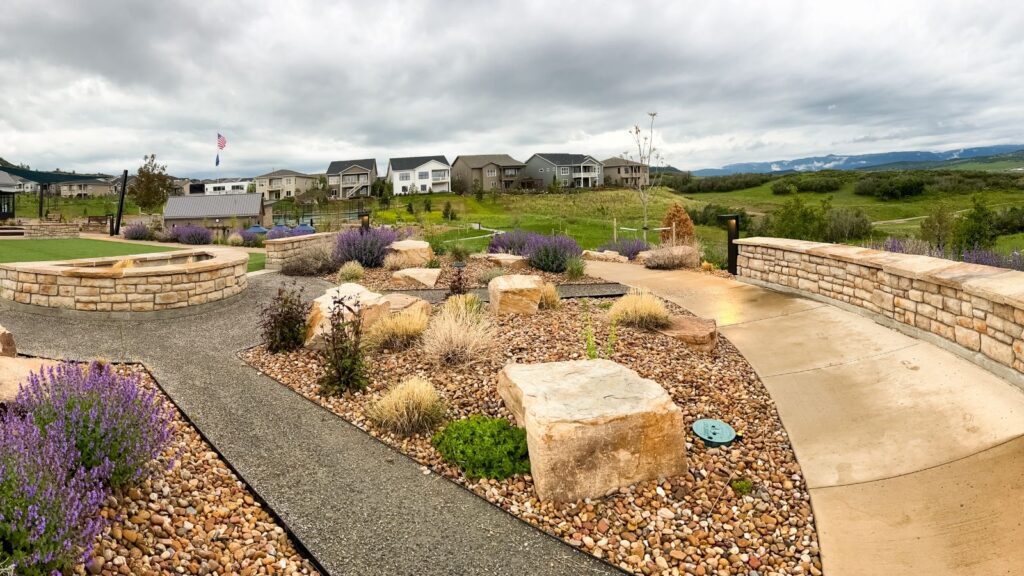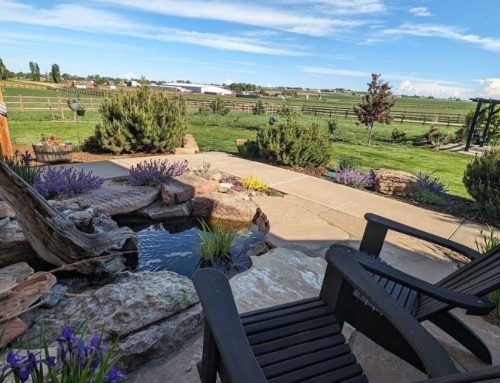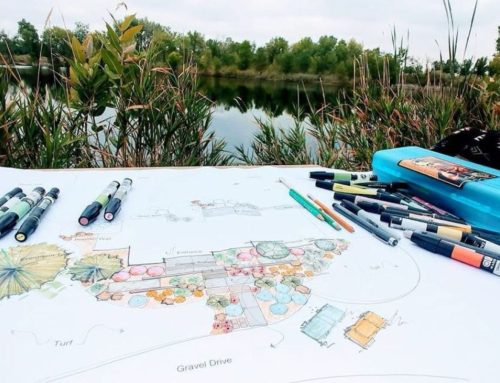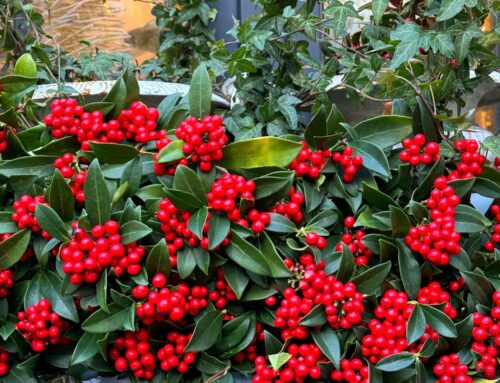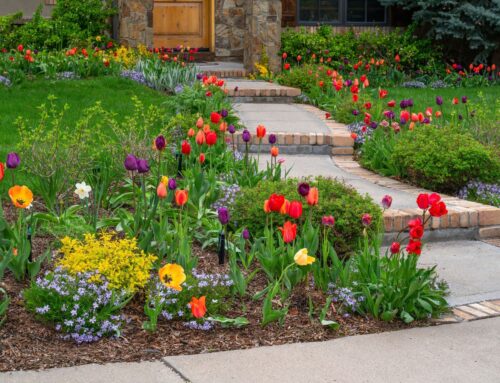5 Landscaping Must-Haves for Mountain Living in Colorado
Landscaping for mountain living in Colorado comes with the reward of breathtaking views and the challenge of maintaining a beautiful, low-maintenance yard in a rugged, high-altitude environment. Rocky terrain, extreme weather, and limited water availability make it essential to plan smart, choose resilient solutions, and work with nature instead of against it. With the right approach, your landscape can thrive while conserving time, money, and natural resources.
5 Landscaping Must-Haves for Mountain Living in Colorado
1. Choose Rocky Mountain Native Plants
Native plants are the backbone of a resilient mountain landscape. Species that originate in the Rocky Mountains are adapted to Colorado’s elevation, temperature swings, strong winds, and low humidity. Favorites like blanket flower, bee balm, and golden currant are naturally suited to high elevation conditions.
Why choose native plants?
-
They require less water and fertilization.
-
They exhibit strong disease and pest resistance.
-
They support pollinators, birds, and local wildlife.
-
They minimize ongoing yard work.
Because these plants are in sync with the soil and climate, you spend less time and effort on maintenance and more time enjoying the view.
2. Use Drought-Tolerant Plants for Water Conservation
Water is precious in Colorado’s semi-arid climate. Drought-tolerant plants, such as Russian sage, agastache, and sedum, bring color and texture to your yard with minimal irrigation requirements.
Smart tips for water-wise gardening:
-
Mulch planting beds to retain soil moisture.
-
Water early in the morning to limit evaporation.
-
Replace traditional lawns with native perennials and hardy groundcovers.
Grouping plants with similar water needs and using water-efficient strategies enhances sustainability and can significantly lower your water bills.
3. Test and Improve Soil for Plant Health
Mountain soils are often rocky, compacted, and nutrient-poor. Start with a soil test to determine pH, drainage, and nutrient levels. Then, improve soil structure with amendments like compost, peat, or aged manure. This creates an ideal foundation for deep root systems and healthy, thriving plants adapted to Colorado’s challenging conditions.
Why amend mountain soils?
-
It boosts fertility and water retention.
-
It encourages strong, resilient root growth.
-
It helps native plants establish more quickly.
4. Install Efficient Drip Irrigation Systems
Slope, wind, and evaporation make traditional sprinklers wasteful. Drip irrigation delivers water directly to plant roots, reducing runoff, minimizing evaporation, and optimizing efficient water use.
Benefits of drip irrigation:
-
Precise water delivery with minimal waste.
-
Improved efficiency on uneven or rocky terrain.
-
Support for automated watering using timers or moisture sensors.
Drip systems are ideal for flower beds, borders, and container gardens. Use them anywhere you want to maximize health while conserving resources.
5. Integrate Native Grasses and Groundcovers
Switching from traditional lawn to native grasses and groundcovers is one of the best upgrades for mountain landscapes. Grasses such as blue grama, buffalo grass, and little bluestem need little mowing or irrigation, enhance erosion control, and create habitat for beneficial wildlife.
Advantages:
-
Minimize maintenance and water use.
-
Reduce soil erosion on hilly or sloped areas.
-
Foster a natural, seamless transition from the built environment to open space.
-
Combine native plants, grasses, and stone elements for a landscape that is both beautiful and environmentally sustainable.
Trends and Innovations in Colorado Mountain Landscaping
Staying ahead with sustainable landscape design can make your yard more resilient and enjoyable for years to come. Key trends include:
-
Rainwater harvesting: Collect runoff for irrigation, reducing potable water use.
-
Permeable hardscapes: Use gravel, flagstone, or permeable pavers to manage drainage and limit runoff on steep lots.
-
Firewise landscaping: Select fire-resistant plantings and defensible space strategies, which are critical in much of Colorado.
-
Wildlife-friendly gardens: Incorporate nectar plants, berry-producing shrubs, and nesting sites for birds and pollinators.
-
Terracing and stonework: Build retaining walls and terraces from regional stone to stabilize slopes and add aesthetic value.
These practices not only yield beautiful results but also promote ecological balance and year-round enjoyment.
Build Smarter Landscapes: Landscaping for Mountain Living in Colorado
Creating a thriving yard in Colorado’s high country hinges on working with your unique terrain, choosing the right plant material, and prioritizing efficient water use. Start with Rocky Mountain native plants, add drought tolerant and low maintenance species, improve your soil, upgrade your irrigation with drip systems, and phase out conventional lawns for native grasses and groundcovers. By adopting these essentials, your landscape will be naturally resilient, easier to care for, and more sustainable in Colorado’s mountain setting.
Ready to design an outdoor space that is as enduring as the mountains themselves? Assess your land, rethink your plant palette, and let mountain smart practices guide your next steps. With the right strategy, your yard will flourish season after season, naturally.
SOLMAUNA Creations & Landscaping Designs in Colorado
Our team of landscape designers brings a unique combination of landscape architecture education paired with extensive knowledge of plants to the table. Contact us today.

